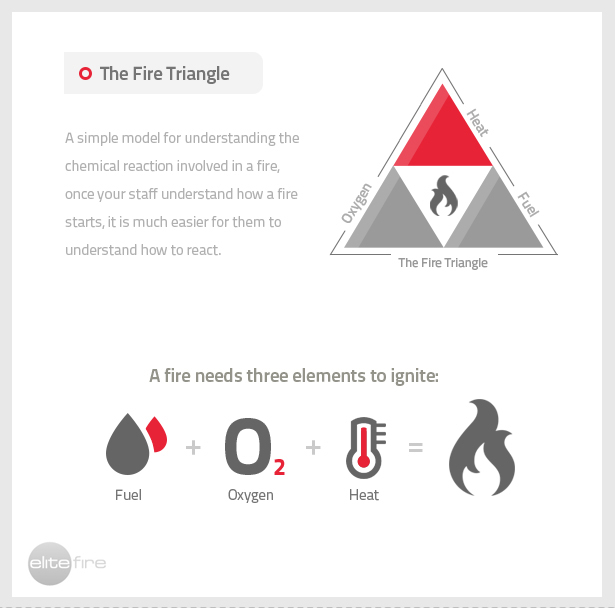Home & Care Home Oxygen Safety
Lung and heart conditions are among the main reasons why a person might require oxygen treatment. This often involves a patient being allowed to go home or back into a care facility with oxygen equipment for regular intakes.
Oxygen, however, presents a huge fire hazard if it is not properly looked after. Whether it’s in your own home or in a care facility, there are a number of dangers where oxygen and the cylinders that hold it are concerned. In this article we will explore a number of key considerations for anyone using or working around oxygen equipment.
Fire Triangle

It’s always worth remembering that fire needs three key ingredients to start – one of which is extremely significant for those intending to use oxygen machines at home or in care facilities.
- Fuel – Fuel is the material which can be burnt, such as clothing or wooden items
- Heat/Spark – Only small sparks or some intense heat is required to bring about a fire
- Oxygen – Keeping the fire going, oxygen helps materials to burn
With this formula in mind, the way oxygen equipment is used and stored is extremely important in the interest of preventing fires. You can find a visual representation of this triangle here.
The Risks for Users
Important information for patients who have been prescribed oxygen treatments can be given via a number of rules to keep in mind:
- Dont’ smoke, including e-cigarettes, around someone using oxygen equipment
- Don’t charge electrical equipment near oxygen equipment
- Don’t keep oxygen equipment near fireplaces or around naked flames
- Don’t keep oxygen equipment around sources of heat, including boilers and heaters
Sticking to some of these rules may seem arbitrary, but it only takes a small flame to start a fire around higher levels of oxygen.
Oxygen Saturated Materials
While oxygen is being used by a patient it is not all used up in the process, with some oxygen building up and settling into materials in the immediate vicinity. Clothes, upholstery, furniture and papers can all allow oxygen to settle unnoticed, something which would see them set ablaze more easily.
The following are some simple steps to keep these risks to a minimum:
- Turn off the oxygen equipment when it is not in use
- Keep oxygen equipment in an area with plenty of ventilation
- Do not keep oxygen equipment close to curtains or cover with other materials
- Do not leave the mask or tubing on beds and seats while the equipment is on
Where should I keep my equipment?
When patients receive their equipment, they will no doubt be instructed on best practices regarding storage. Here are three clear, solid rules on the matter:
- Store your equipment in a ventilated area, somewhere dry, clean and away from heat sources
- Do not store oxygen equipment with items such as paint, oils, grease or gasses
- Keep oxygen equipment away from your stores of any combustible materials such as paper and upholstery items
Oil & Grease
Two substances of particular note when it comes to oxygen equipment, oils and grease, present a real danger if you don’t adhere to the following:
- Do not use oil or grease around the equipment
- Do not use Vaseline or oil based creams – water soluble items only
- Ensure anyone using the equipment has clean hands
Local Fire Authorities
The local Fire & Rescue Service will be given details of anyone with oxygen equipment in their home or care facility. This enables them to have all the information should there be a fire or an evacuation at your property or nearby properties. A home visit may be required, but only as a measure to ensure the safety of everyone concerned.
Other Safety Measures
 When a patient is setup with oxygen equipment, they are provided with roughly 15 metres of tubing to ensure they have enough length to move around their home or care home.
When a patient is setup with oxygen equipment, they are provided with roughly 15 metres of tubing to ensure they have enough length to move around their home or care home.
This, however, presents more safety issues regarding trip hazards. In order to ensure safety for everyone, it is recommended that those using such equipment should:
- maintain tubing properly to avoid tubing becoming damaged when kinked or when squashed in a door
- keep tubing away from naked flames, including cookers, candles and fireplaces
- not modify or adapt their tubing
- tamper with or detach any firebreaks present in tubing
At Scutum London, we carry out professional fire risk assessments to ensure you and your staff are doing everything possible to prevent the outbreak of a fire. Care homes are particularly at risk from fires where oxygen equipment is present, making the importance of correct safety procedures even greater.
To learn more about how our fire safety services can be utilised for your care home facility, simply contact our team today.
Request a Callback
Just fill in your details below and we'll get back to you as soon as we can!

About Scutum London
Scutum London is a leading expert in fire safety and security solutions for businesses and organisations located across South East England, including London and Surrey.
From fire alarms, fire extinguishers and fire risk assessments to access control, CCTV and intruder alarm systems – and a lot more besides – we offer a comprehensive range of products and services designed to keep you, your business and your staff and visitors safe.
With decades of industry experience to call on, we’re proud to hold accreditations from leading trade associations and bodies such as British Approvals for Fire Equipment (BAFE), the British Fire Consortium, the Fire Industry Association (FIA) and Security Systems and Alarms Inspection Board (SSAIB).
If you’d like to find out more about Scutum London, get in touch with our friendly team or explore our products and services on our site.

